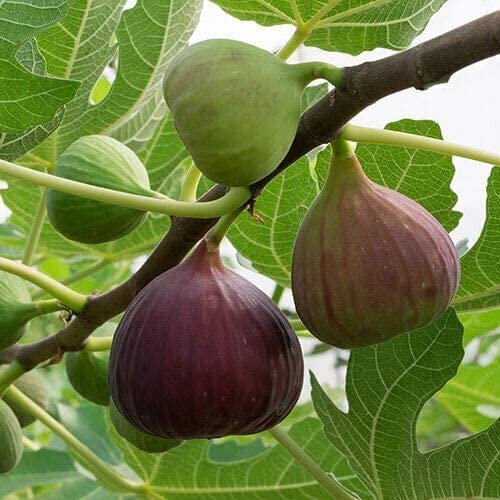Pardon Me, Do You Have Any Ficus Carica?!
Closely aligned with the Great Themes of Advent are multiple symbols of the season, each conveying some profound and often comedic axiom about our faith. Our Advent symbol this week may possibly be the world’s most perfect, complete natural food. Dear readers, I present the oldest harvested fruit known to humankind, Ficus carica, or the Fig Tree. Earliest cultivation by humans dates the fig (sorry, too hard to pass up the double entendre verb there!) from 9,400 BCE in Neolithic Gilgal, a village in the Jordan Valley. This find places figs before other harvested food as humankind’s earliest successful agricultural venture, and for good reason! Figs pack an impressive array of helpful vitamins, minerals and carbohydrates into a compact frame ideal for warm-climate cultivation, boasting a deep drill taproot able to find water in very dry climes. And figs parade their pride of place throughout the biblical narrative: Adam and Eve covered their genitalia (still don’t know about the belly button) in Genesis using fig leaves, and an early Hebrew Genesis text claims the fruit of Tree of Knowledge of Good and Evil was not an apple at all but rather a fig! In Deuteronomy 8:8, the Promised Land is presented as a land rich with harvestable produce, with wheat and barley, vines and fig trees, pomegranates, olive oil and honey. These Seven Species of Fruit and Grains are presented in chronological order of harvest and claimed to be unique to Israel, an early example of Israel’s Ministry of Tourism! In Judges 9:11, the fig tree parabolically speaks and says, “Should I give up my fruit, so good and sweet, to hold sway over the trees?” Evidently the sweetness of the fig itself was pleasing to our Hebrew forebears! Isaiah 34 quotes God in God’s wrath against Israel, prophesying that all the starry host will fall like withered leaves from the vine, like shriveled figs from the fig tree. Gross. And perhaps most famously, the prophet Micah provides the OT summary of peaceable abundance, a stunning image which both Theodore Hertzl, the father of Zionism, and George Washington used to characterize their visions for their respective countries: Everyone will sit under their own vine and under their own fig tree, and no one will make them afraid, for the Lord Almighty has spoken.

Christian scripture also stars this amazingly symbolic fruit. Jesus uses the fig tree as a parabolic warning to his disciples when he curses one as they enter the Temple Mount (Matthew 21, Mark 11 and Luke characteristically softens the story in his 21st chapter). Luke’s Jesus tells a fantastic parable with it in his chapter 13. The Johannine Jesus (Jesus from John’s Gospel) sees Nathaniel sitting under the fig tree, reflecting upon his life, in John 1. In all these citations the fig is used to denote prodigious abundance, peaceable living, generativity in fruit, protection from shame, and a sign of God’s provision whether as blessing or as warning. In the words of another famous beloved ancient food, as I roll down the back window of the Rolls, “Pardon me, do you have any Ficus carica?!” Enjoy!
- Which story or citation of the fig tree, leaves or fruit in scripture speaks to you most powerfully this Advent?
- Which element of the fig tree’s Advent symbolism speaks to you most persuasively this Advent? Abundance? Peace? Generativity? Protection? Provision?
- Have you noticed our Israelite ancestors had a serious sweet tooth? Honey, dates, pomegranates, figs…like, seriously?! What beloved Christmas treat, sweet, cookie, cake, pie, bread, fruit, or concoction takes you immediately to beloved Christmas memories?! I hope we all find comfort at least once in a Christmas caloric dessert explosion!